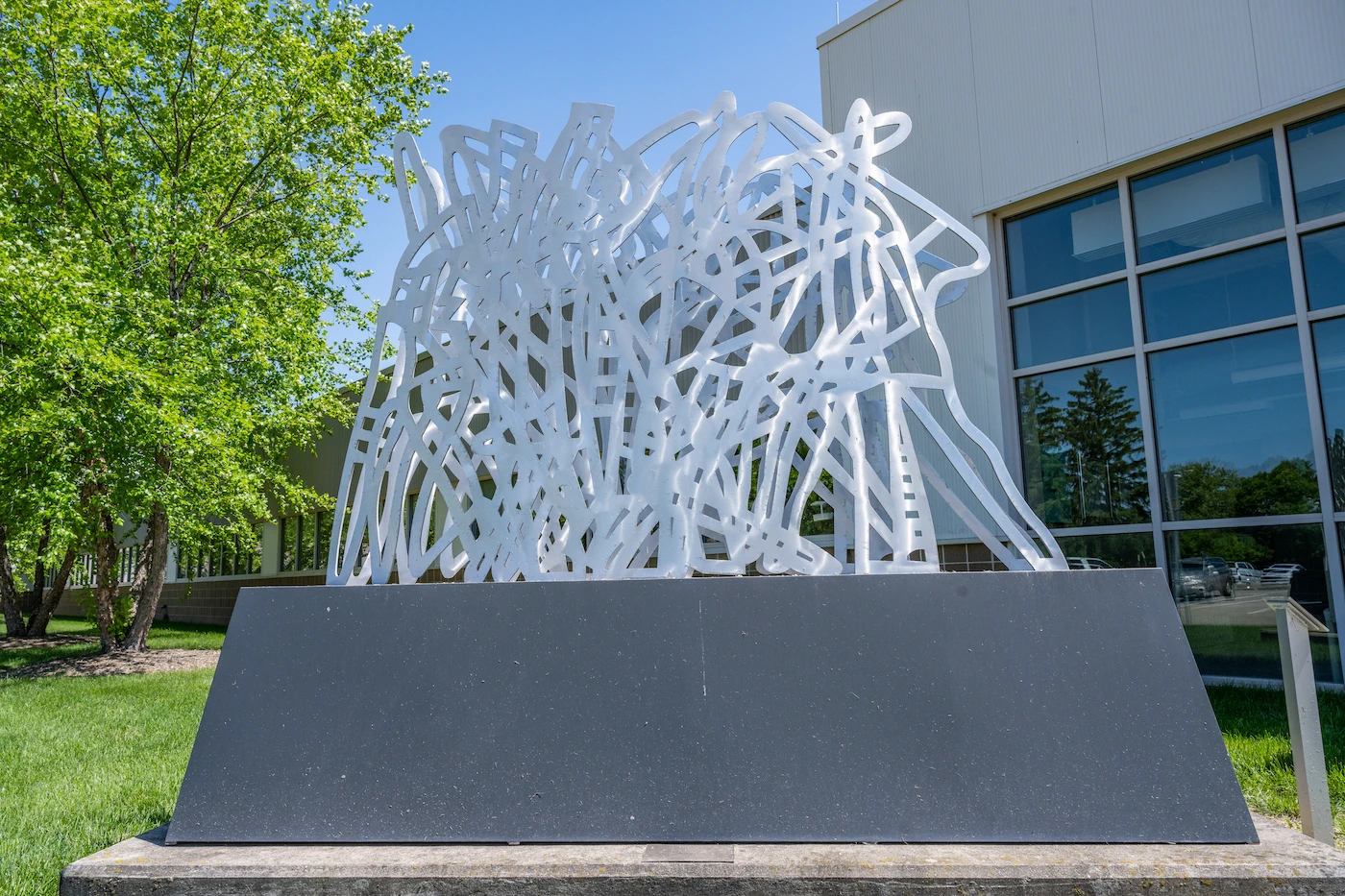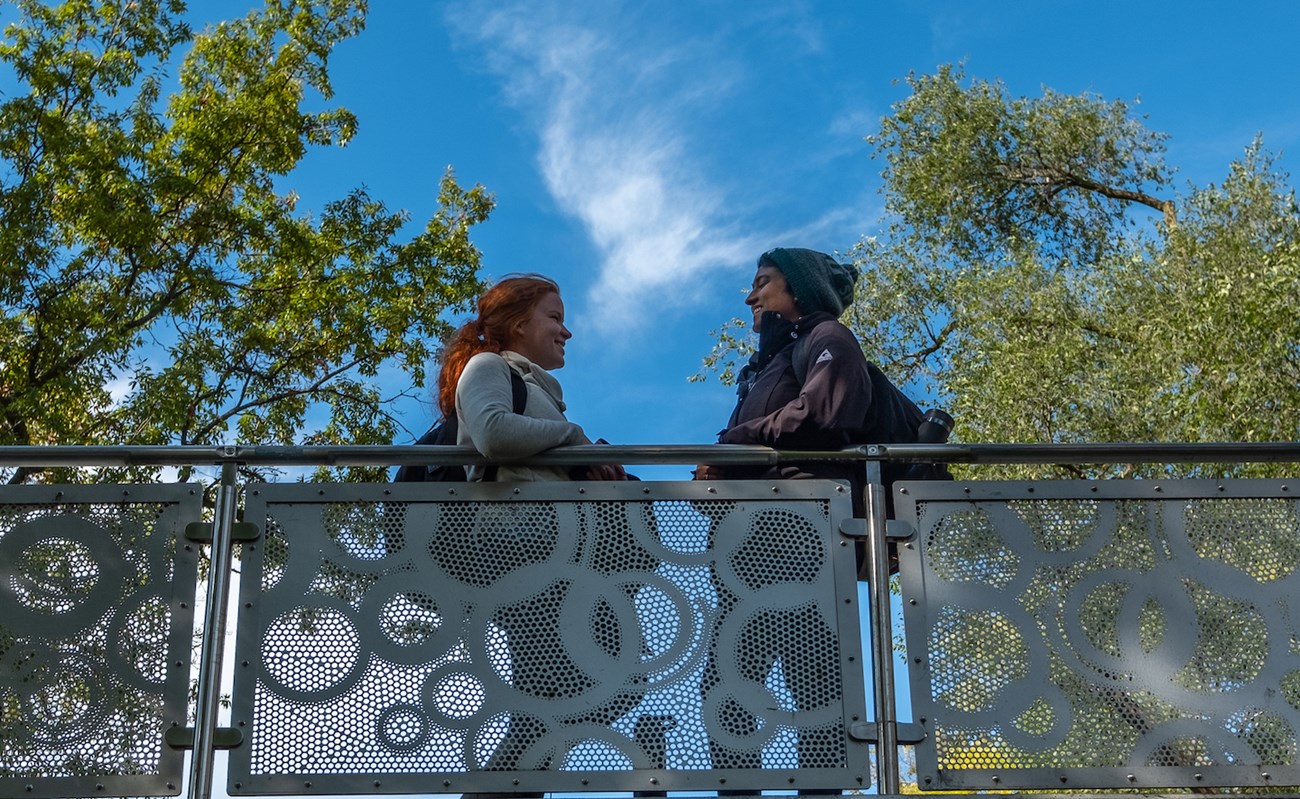Across the 5,300-acre campus of Michigan State University are more than 500 academic buildings, abundant park-like green spaces and the banks of the Red Cedar River. Interspersed throughout this landscape is a vast collection of public art, available and accessible to Spartans, community members and visitors year round.
At MSU, the arts are “irreplaceable instruments of knowledge” and are embedded in the university’s academic mission. One group ensuring this mission endures is the Public Art on Campus Committee. Established in 1999 by the MSU Board of Trustees, the committee makes recommendations on the acquisition, placement and maintenance of public art on campus. MSU dedicates one half of one percent of the cost of major renovations or new buildings (excluding utilities) to public art, capped at $250,000 per project.

“We talk about campus as being a living-learning laboratory and public art is part of that,” says Judith Stoddart, vice provost for University Arts and Collections, who heads the Public Art on Campus Committee. “MSU’s arts strategy takes into account how the arts are integrated into daily life on campus for people who live, work, study and visit here.”
Since its inception, the committee has guided the installation of 153 pieces of public art on campus, including paintings, lithographs, photographs, interior and exterior sculptures, architectural glass, tile mosaics and a digital projection installation. And that’s just a portion of the trove of art on campus.
“Overall, we probably have 800 to 900 public art assets across the campus that were either part of the Works Progress Administration or reliefs on buildings that are part of the architecture, or from colleges that purchased pieces of art or were gifted artwork,” says Stephen Troost, campus planner.
Many of these works of art can be viewed on MSU’s campus art map.
As the campus landscape changes with new facilities, so does its collection of art. Recent building projects include the STEM Teaching and Learning Facility — a new academic building that repurposes parts of the former Shaw Lane Power Plant — whose digital art installation uses algorithms to project colorful bursts of activity representing campus power usage onto the interior walls of the building’s former boiler. In the morning, the swirling figures move slower in cooler tones and as the day progresses and energy demands increase, the art picks up speed and its colors skew warmer.
“We’re attempting to be more thoughtful and considerate of the location and also the academic nature and goals of that environment,” says Steven Bridges, senior curator and director of curatorial affairs at the Eli and Edythe Broad Art Museum at MSU. “The process of art selection is increasingly dialogical, based on conversations not only with deans and directors of particular units on campus but also faculty and students who work and learn in those units.”

This fall, a project called STEAM Power will bring together artists, faculty and graduate students in residence around the topic of STEM that will be centered in the STEM Teaching and Learning Facility. It will explore new ways of teaching and learning in STEM disciplines.
There are few places you won’t find art on campus and the materials are often surprising. At the MSU Surplus Store & Recycling Center, four sculptures made of scrap tires by artist Chakaia Booker adorn a bright orange wall inside the building. The facility is a fitting home with its goal of reducing the amount of university materials that go to the landfill.
MSU is home to a diverse community, so when determining what gets added to the collection, representation of artist backgrounds and themes matters.
“We have pieces by artists of color, up-and-coming artists, Michigan-based artists as well as faculty, students and alumni,” says Troost. “Some people don’t see themselves represented on the campus. Art can help do that.”


MSU alumni, faculty and students all have left their art footprints on campus.

When the committee has reserve funds, it uses those to make an educational opportunity out of an art commission. One well-traveled example is the bridge behind the Main Library. When the time came to replace the railings a few years ago, landscape architect Deb Kinney proposed the idea of making the railings a piece of art. The public art committee provided funding and created a student competition, partnering with arts and humanities units across campus. Students could submit their sketches, which were reviewed by a subset of the committee, and the winner received a stipend.
“I hope people who see the art on campus interpret it in a way that’s personal for them and feel like they really have some ownership,” says Stoddart. “This art is for everyone.”
By Meredith Mescher, originally published by MSU Today